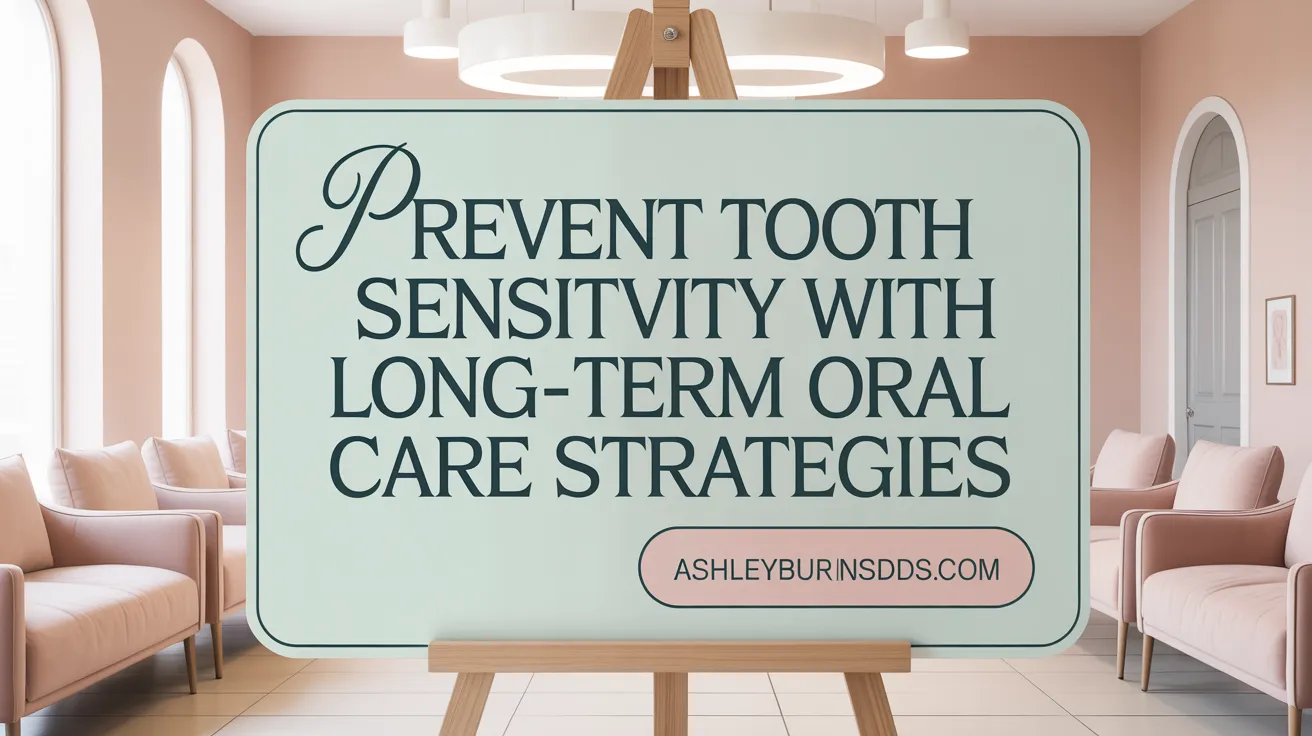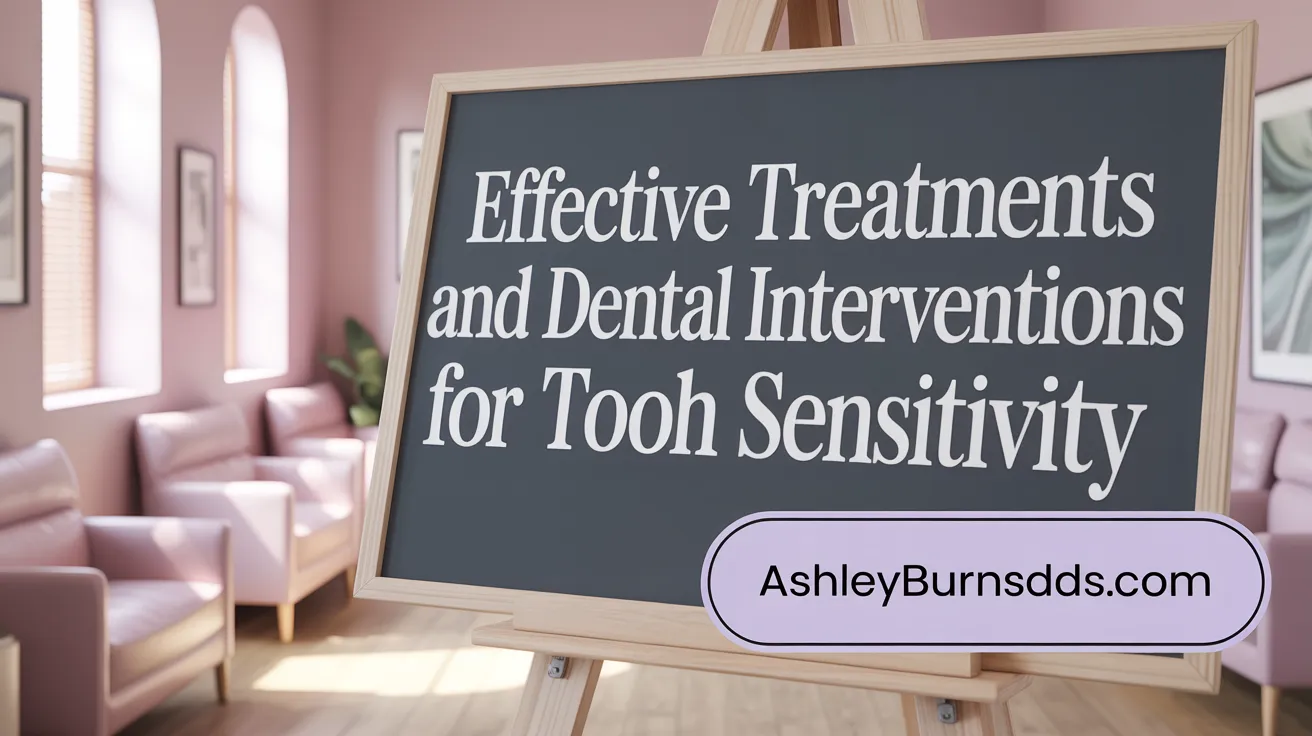Introduction to Tooth Sensitivity
Tooth sensitivity is a common dental complaint affecting millions worldwide. Characterized by sharp, temporary pain triggered by hot, cold, sweet, or acidic stimuli, it affects daily activities like eating and brushing. Understanding what causes this condition, the mechanisms involved, typical symptoms, and effective preventive and treatment options is essential for maintaining oral comfort and health. This article explores the anatomy related to tooth sensitivity, common triggers, prevention strategies, treatment modalities, and home care tips.
Causes and Underlying Mechanisms of Tooth Sensitivity

What causes tooth sensitivity?
Tooth sensitivity mainly occurs when the protective outer layer of the tooth, known as enamel, becomes worn down or the gums recede, exposing the underlying dentin. This exposure allows stimuli such as hot, cold, sweet, or acidic foods and drinks to reach the nerve endings inside the tooth, causing pain or discomfort. Several factors contribute to the wearing down of enamel and the recession of gums. Acidic foods like citrus fruits, sodas, and vinegar can erode enamel over time. Brushing too hard or using a hard-bristled toothbrush can also accelerate enamel loss and gum recession. Additionally, habits like teeth grinding (bruxism) and certain dental procedures may damage the enamel or expose dentin. Cavities, worn fillings, and gum disease also expose sensitive parts of the tooth, increasing pain. Preventing sensitivity involves using gentle brushing techniques, fluoride toothpaste, and regular dental checkups. Restorative treatments like fluoride varnish or dental sealants can help seal exposed dentin and protect the nerve tissues (Tooth sensitivity causes, Causes of tooth sensitivity, Treatments for sensitive teeth).
What are the underlying mechanisms behind tooth sensitivity?
At the core of tooth sensitivity is the exposure of dentin, the layer beneath the enamel that contains tiny tubes called dentinal tubules. These tubules connect directly to the nerve endings inside the pulp of the tooth. When stimuli such as heat, cold, or sweet substances affect the exterior of the tooth, they cause fluid movement within these tubules. This movement irritates the nerves, leading to sharp, short pain. The sensitivity becomes more severe when the dentin is extensively exposed due to enamel erosion or gum recession (Dentin hypersensitivity overview, Effects of enamel loss.
How does tooth anatomy relate to tooth sensitivity?
The structure of a tooth plays a vital role in its sensitivity profile. Enamel, the durable outer layer, serves as the primary shield against external stimuli. Beneath it lies dentin, with its microscopic tubules leading directly to the pulp where nerves reside. When enamel is intact, it effectively insulates these nerve endings. However, when enamel wears away through factors like acidic erosion or aggressive brushing, the dentinal tubules become exposed. Gum recession removes the protective cementum covering the roots, which also lack enamel and are highly sensitive. Cracks, chips, and dental decay may also expose dentinal pathways, increasing the risk of pain. Thus, maintaining the integrity of enamel and gum tissue is essential for preventing sensitivity and safeguarding the nerve tissues within the teeth (Tooth anatomy and sensitivity, Enamel wear and dentin exposure, Gum recession and sensitivity).
Symptoms and Common Triggers of Sensitive Teeth

What are the symptoms of tooth sensitivity?
Tooth sensitivity is characterized by a sharp or sudden pain when teeth are exposed to stimuli such as hot, cold, sweet, or acidic foods and drinks, or even during brushing or flossing. This occurs when the enamel wears down or the gums recede, exposing dentin or tooth roots, which contain nerve endings that react to these stimuli. The pain is typically temporary but can be quite uncomfortable, affecting daily eating and drinking routines.
Common causes include acidic foods, vigorous brushing, cracked teeth, gum disease, teeth grinding, and the use of whitening products. Recognizing these symptoms early allows for better management through dental treatments like desensitizing toothpaste or protective sealants to prevent further sensitivity.
What are common triggers and signs of tooth sensitivity?
Triggers for sensitive teeth include hot or cold foods and beverages, sugary or acidic substances, and exposure to cold air. Signs involve sudden, sharp pains or discomfort that occur in specific teeth when these triggers happen. These symptoms are often noticed after activities such as brushing, flossing, or consuming certain foods.
Underlying issues like worn enamel, exposed dentin, gum recession, cavities, or cracked teeth can create pathways for stimuli to reach nerves, leading to these painful sensations. Managing triggers by avoiding abrasive or acidic foods, using gentle oral hygiene practices, and applying desensitizing toothpaste can reduce discomfort. However, persistent or worsening sensitivity should prompt a visit to the dentist, who can diagnose and treat underlying problems effectively.
Preventing Tooth Sensitivity: Strategies for Long-Term Oral Health

How can sensitive teeth be prevented?
To keep your teeth healthy and prevent sensitivity, adopting gentle oral hygiene practices is essential. Use a soft-bristled toothbrush and brush gently to avoid wearing down enamel and irritating gums. Opt for toothpaste formulated for sensitive teeth, which often contains fluoride to help strengthen enamel.
Limiting intake of acidic foods and beverages, such as citrus fruits, soda, and energy drinks, can protect the enamel layer from erosion. Rinsing your mouth with water after consuming these items helps neutralize acids and minimize damage.
Regular dental check-ups play a crucial role in early detection of problems like gum recession or small cavities that could lead to increased sensitivity if left untreated. Dentists can provide targeted treatments, such as fluoride varnishes or sealants, to reinforce enamel.
In addition, if you grind your teeth, wearing a mouthguard at night can prevent excessive wear on enamel and gum tissue. Avoiding aggressive brushing and using desensitizing toothpaste as part of your daily routine can further reduce the risk of developing sensitive teeth.
Implementing these strategies into your daily habits not only reduces discomfort but also helps preserve the overall integrity of your teeth for long-term oral health.
Treatment Options and Dental Interventions for Tooth Sensitivity
 When confronting tooth sensitivity, a variety of professional treatments and dental interventions can effectively alleviate discomfort and address the underlying causes.
When confronting tooth sensitivity, a variety of professional treatments and dental interventions can effectively alleviate discomfort and address the underlying causes.
One of the most common approaches includes the application of fluoride varnishes and gels that help remineralize enamel, making teeth more resistant to stimuli. Dental bonding or the placement of sealants is also used to cover exposed dentin areas, effectively blocking nerve pathways and reducing pain.
For more severe cases, especially when gum recession exposes roots, gum grafts are performed to restore tissue coverage and shield sensitive surfaces. Additionally, dental procedures such as filling cavities, treating cracked or chipped teeth, and performing root canal therapy can remove sources of nerve irritation, providing long-term relief.
Medications and desensitizing products play an essential role as well. Desensitizing toothpaste containing potassium nitrate, stannous fluoride, or oxalates can be used daily to diminish nerve response over time. Dentists may also prescribe high-fluoride treatments or suggest specialized mouthwashes to strengthen enamel and soothe nerves.
Managing existing dental issues like cavities, periodontal disease, or enamel erosion is crucial. Proper treatment of these conditions not only reduces sensitivity but also prevents further deterioration.
Knowing when to seek professional care is vital. Persistent pain lasting several weeks, severity of symptoms, or signs of infection warrant prompt dental consultation. These signs may indicate more advanced problems requiring invasive interventions such as root canals or surgical tissue grafts.
Regular dental visits for checkups and cleanings are key components in maintaining oral health and minimizing sensitivity. By combining professional treatments with good oral hygiene practices—such as gentle brushing with a soft-bristled toothbrush, limiting acidic foods, and addressing grinding habits—patients can effectively reduce tooth sensitivity and preserve their dental health.
For optimal results, early intervention is recommended. If you experience ongoing discomfort, consult your dentist to diagnose the cause accurately and formulate an appropriate treatment plan tailored to your needs.
Home Remedies and Self-Care Tips for Managing Sensitive Teeth
Are there any effective home remedies or natural solutions for sensitive teeth?
Yes, there are several effective home remedies and natural solutions you can try to manage sensitive teeth. Using desensitizing toothpaste containing potassium nitrate or stannous fluoride regularly helps reduce nerve sensitivity by blocking sensations from reaching the nerve endings. Rinsing with saltwater can help decrease inflammation and promote healing of the gums and exposed dentin, providing temporary relief. Hydrogen peroxide rinses, when diluted properly, can disinfect and soothe irritated tissues.
Natural remedies like applying clove oil, which has mild numbing properties, or vanilla extract on the affected area can temporarily alleviate pain. Tea made from green tea can be used as a mouthwash to harness anti-inflammatory benefits. Honey, turmeric paste, capsaicin gel (derived from chili peppers), and coconut oil also have properties that may soothe pain, reduce inflammation, or fight bacteria.
Despite these options, maintaining good oral hygiene, avoiding acidic foods, and using a soft-bristled toothbrush are crucial. Persistent or severe tooth sensitivity should be evaluated by a dentist to rule out underlying issues such as cavities, cracks, or gum disease.
What general tips exist for relief and self-care of sensitive teeth?
To keep sensitive teeth manageable, avoid very hot, cold, sugary, or acidic foods and drinks that can trigger discomfort. Use a toothpaste specifically formulated for sensitive teeth; these typically contain ingredients like potassium nitrate that help desensitize nerve endings.
Brush gently with a soft-bristled toothbrush to prevent further enamel wear and gum recession. Regular flossing helps remove plaque and prevent gum disease, which can contribute to sensitivity. Also, limit abrasive or whitening dental products, as they can erode enamel and worsen sensitivity.
Applying fluoride treatments or desensitizing gels at home can strengthen enamel and reduce nerve sensitivity. Mouth guards can protect against damage from teeth grinding or clenching, a common cause of sensitivity.
If sensitivity continues or becomes more severe, consult a dental professional for a thorough diagnosis and tailored treatment plan. Addressing underlying causes such as cavities, gum recession, or cracks is essential to permanently reducing discomfort.
Maintaining Comfort Through Awareness and Care
Tooth sensitivity can significantly impact daily life, but understanding its causes and mechanisms allows for effective management and prevention. By adopting gentle oral hygiene practices, avoiding common triggers, utilizing professional and home treatment options, and seeking timely dental care when needed, individuals can minimize discomfort and protect their oral health. Regular dental visits combined with mindful dietary and lifestyle choices form the basis of long-term relief and strong teeth, ensuring a pain-free smile and overall well-being.
